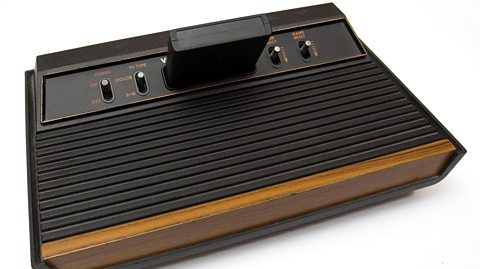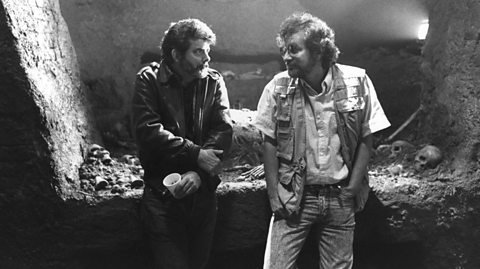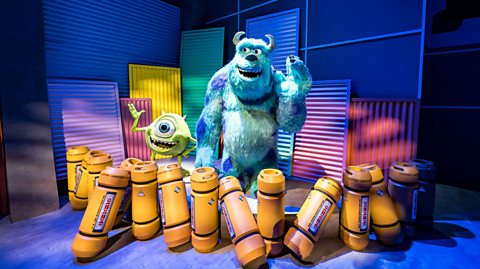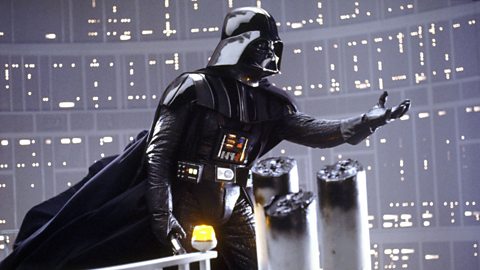Ever watched a film and spotted something you thought you recognised from a different movie?
Chances are, you just found an Easter egg.
While most of us know an Easter egg as a springtime chocolate treat, itâs also a term used for hidden secret references placed in films, games or books for die-hard fans to spot.
Why are they called Easter eggs?
The first use of the term Easter egg for a secret discovery is normally associated with a 1980 computer game called Adventure.
The game was published by Atari at a time when many gaming studios didn't credit game developers within their products.

Adventureâs designer Warren Robinett disagreed with this policy, so set about coding a secret within his game. If a player took a single pixel (known as the Grey Dot) to a certain location, they would see the message âCreated by Warren Robinettâ.
Robinett told nobody that he had done this and the secret wasnât discovered until long after heâd left Atari. After it had been found, Steve Wright, the boss of Atariâs games division was thrilled. He felt that finding secrets in games would be incredibly popular with players and encouraged his developers to keep doing it â thinking of it as a virtual Easter egg hunt.
The 1975 film The Rocky Horror Picture Show is also often associated with creating the idea of Easter eggs. According to one story, the cast and crew held an Easter egg hunt on the set and several of the eggs werenât found and could be seen on screen. However, as these eggs werenât deliberately left in the film for viewers to find, this wouldn't be considered a true Easter egg and more of a classic movie blunder.
The Spielberg-Lucas love in
Directors Steven Spielberg and George Lucas first met each other in 1967 before becoming firm friends.
The pair advised each other on their projects and worked together unofficially before teaming up for the first of the Indiana Jones films, released in 1981.
So itâs no surprise that each of them has left the occasional nod to the other in their films.
In Spielbergâs E.T. the Extra Terrestrial (1982), E.T., Elliott and Michael head out to phone home, using Halloween as a cover to escape. E.T., wearing a sheet as a ghost costume, spots a familiar looking face. The alien points at a child wearing a Yoda mask â from Lucasâ Star Wars films â and says âhomeâ.

Lucas then returned the favour in 1999âs Star Wars: Episode I â The Phantom Menace. When Queen Amidala suggests holding a vote in the Senate to appoint a new Chancellor, three members of E.T.âs species are shown gesturing. It was Spielbergâs idea to include E.T. and Lucas confirmed this meant that the Extra Terrestrialâs species was officially a part of the Star Wars universe, as well as being an excellent Easter egg.
Several Star Wars references were also included in the Indiana Jones trilogy. In Raiders of the Lost Ark, several hieroglyphics on the Ark of the Covenant seem to depict the droid characters C3PO and R2D2 while Temple of Doom sees Indiana Jones visit Club Obi Wan â a nod to the Star Wars character.
Pixar puzzles
There are theories that all of the Pixar films are connected and take place in the same universe â and the creators of these movies have left lots of Easter eggs to back that up.
In fact, the vast majority of Pixar films include a secret tease to their next release.
The practice goes all the way back to their first film â Toy Story. In the 1995 movie, a Dissinâ Fly crashes into Buzz Lightyearâs helmet, throwing forward to the flies appearing in A Bugâs Life in 1998 - where Woody also makes a cameo in the credits to preview Toy Story 2.
Other examples include Boo handing Sully a Nemo doll in Monsters, Inc to hint at Finding Nemo and an Incredibles poster appearing in Coco, ahead of Incredibles 2 being released.

Itâs not just Pixar though â Walt Disney Animation Studios also sneak in plenty of Easter eggs. Keep an eye out for Rapunzel and Flynn from Tangled arriving in Arendelle once Elsa has opened up the gates in Frozen, while the centenary-celebrating 2023 film Wish is packed with references to the studioâs entire back catalogue, including creating a new origin story for the iconic Disney song âWhen You Wish Upon A Starâ.
The Konami Code
If youâve ever played a computer game, you may well have a secret button combination saved in your memory.
Up, Up, Down, Down, Left, Right, Left, Right, B, A. Sometimes you may need to add Select or Start as well.
By pressing those buttons in that order, you can often gain access to secret modes of games, or extra lives â but it all started by accident.
In converting the arcade game Gradius (1986) for the Nintendo Entertainment System (NES), developer Kazuhisa Hashimoto found the game too difficult to play when he was testing it. He added the code, which would then give the player a rich bounty of power-ups.

But he forgot to take the code out of the game and it was only discovered in the later stages of production. Konami, the gameâs publishers, left it in as they were concerned removing it would lead to bugs and errors.
They then added it to their subsequent NES release Contra (1987) â and by now, knowledge of the secret code spread. Activating it in Contra earned a player an extra 30 lives.
It became known as the Konami Code and variations of it appeared in subsequent Konami releases and in tribute, in games made by other companies.
This article was published in March 2024
Power up with the ultimate Super Mario quiz
Test your knowledge on the world's most famous video game plumber.

Six movie quotes that are victims of the âMandela Effectâ
You may be surprised at how many famous lines from movies we get wrong!

Five films you may not have known were remakes
There are plenty of reboots and remakes of classic movies - but did you know that these films weren't original stories?
